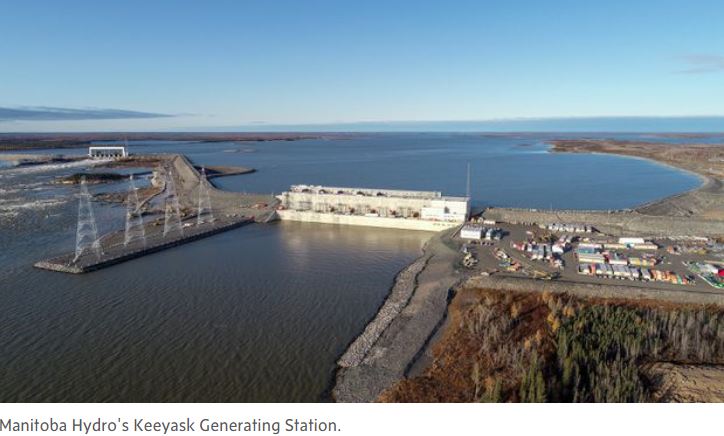Gary Doer is a former premier of Manitoba and a former Canadian ambassador to the United States.
There’s an old Western Canadian saying: It’s always easier to curl from behind the glass. This has often applied to building hydroelectric projects in Canada: High capital costs lead the news; early assessments rarely feature the long-term benefits of low domestic rates, dependability and exports. But hydro’s importance in providing for two-thirds of Canada’s renewable energy requires a full analysis of costs and benefits.
In Manitoba, we knew that critics from behind the glass had called a proposal to build Limestone, the last dam completed before my time as premier, a boondoggle on account of its upfront debt. However, it was largely because of Limestone’s export sales that we were able to keep domestic electricity rates among the lowest in North America and reduce our debt-to-equity ratio every year.
But not all was perfect with Manitoba Hydro. A decision made decades earlier to run two transmission lines side by side, carrying 70 per cent of our power, had created a serious risk of catastrophic power outage from severe weather. Major storms in 1996 highlighted this danger, and with mounting scientific evidence of more frequent extreme weather from climate change, we became increasingly worried about a potential disaster waiting to happen.
The immense human and economic toll of losing power in the middle of a Manitoba winter was almost unimaginable. Independent studies pegged the cost of losing power in January at $4-billion, or $20-billion if the disruption continued over one year.
While Limestone had foreshadowed controversy, we chose to invest capital – real and political – to fix our reliability risk.
Manitoba Hydro advanced two reliability concepts: building a new, separate transmission line, and developing a partnership with four local First Nations to build the Keeyask dam earlier than needed for domestic use in conjunction with firm export sales.
We knew from the past, including first-hand accounts from our two northern Cree cabinet ministers and reports from former premier Duff Roblin, that Manitoba Hydro’s history had included actions without consent resulting in real pain in First Nation communities. The utility’s achievement of partnership on the dam allowed it to proceed.
The question of where to run the new transmission line generated intense public debate. Respected Hydro engineers preferred the shortest route, through the east side of Lake Winnipeg. We disagreed. Four First Nations on the immediate east side of the lake were opposed to a transmission line and had an alternative vision for a UNESCO World Heritage Site designation for the boreal forest, where their people had lived for thousands of years. I listened and embraced their vision for their lands.
Beyond the moral imperative of First Nations’ consent, their opposition would have been a battle of David versus Hydro’s Goliath. Heated political opposition to Manitoba Hydro in Minnesota, which is a buyer of the province’s electricity, included legislation aimed at blocking our power sales; this opposition often featured voices from Manitoba First Nations. A transmission line required eight separate approvals in Canada and the U.S. – delays or denials would have been costly and added more time and uncertainty.
As there were critics who continued to call for the shortest route, I thought it appropriate to seek a democratic mandate for a longer, but more certain and respectful route. During the 2007 election campaign, I visited Poplar River First Nation and again announced our commitment to endorse the community’s vision for their lands. I was proud that Manitobans responded by voicing support.
History had taught us that wishful thinking is not consent. Not at the time of the election, not when the Supreme Court ruled on the Crown’s duty to consult and not today.
In an era of many stalled infrastructure projects, Manitoba Hydro was able to get its projects done. Costs ran significantly over budget but the utility was able to achieve substantially higher offsetting revenues in future years from export customers, confirmed publicly as totalling more than two-thirds of project costs. An independent analysis by the Manitoba Public Utilities Board will be able to reconcile final values.
The most important benefit achieved was reliability – protecting Manitobans from the almost unthinkable pain and loss of losing power in the middle of January, and a $4-billion repair bill. Reliability also protected our export markets, worth 25 per cent of revenues, by addressing their documented concerns.
Manitoba Hydro’s success in securing major new firm power sales to both the U.S. and Saskatchewan will benefit Manitoba ratepayers by having export customers pay down a significant portion of infrastructure costs.
Moreover, the new Keeyask dam will provide affordable renewable electricity for domestic consumers for the next 70 to 100 years.
Thanks to previous builders, Manitoba Hydro and other Canadian hydro utilities are strongly positioned for the low carbon future our children and grandchildren are demanding.
